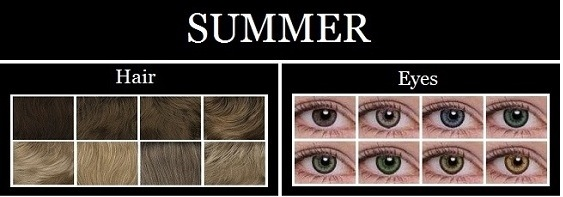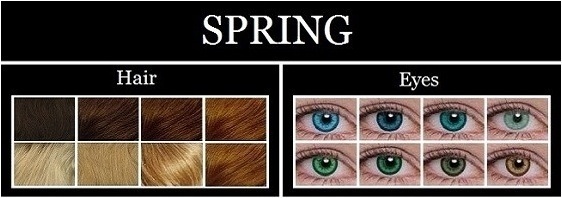Four Season Color Analysis
Home > 4 Season Color Analysis
Perform Your Own
Four Season Color Analysis
Ready to discover your color palette?
First let’s take a quick look at the history of color analysis
Johann Wolfgang von Goethe
The seed of color analysis was planted when German philosopher Johann Wolfgang von Goethe (1749-1832) realized the connections between different colors and created “color psychology”. But that was just a beginning, there was no mention yet of the connection and reaction between the color of clothes and skin tone.
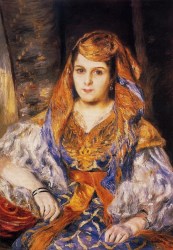 Johannes Itten
Johannes Itten
Between 1919 and 1933, Johannes Itten (Swiss painter and professor at the Bauhaus University in Germany) took things a step further when he concluded that portraits look better when certain colors were used in conjunction with specific hair and skin tones. He then created four different color palettes corresponding to the four seasons, each of which included four different complexions. These made it much easier for students to paint more attractive portraits.
Suzanne Caygill
California-based color theorist Suzanne Caygill (1911-1994) took the next step by combining Itten’s “season theory” with Goethe’s “color psychology”. Her own theory asserted that humans carry information about their personality and style in their natural coloration, and that through personal traits such as skin, hair, and eyes we can relate personal colors to those found in nature. This theory proved to be extremely popular and became the foundation for many color professionals.
Carole Jackson
Finally, psychologist Carole Jackson wrote the book “Color Me Beautiful”, which became wildly popular in the 1980’s. In it, she simplified Caygill’s seasonal system (which used sixteen different personalities per season), and reduced it to a single personality per color season. This made it vastly more straightforward for everyday women to shop for appropriate clothes, accessories, and makeup.
Making 4 Season Color Analysis Work For You
Thanks to Carole Jackson’s simplified theory, discovering your season is pretty straightforward:
Step 1. Determine whether you are a COOL or a WARM type
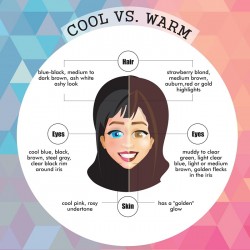
The first step is the hardest. Basically, it involves looking beyond your skin color to discover the undertone that gives definition to your looks.
Skin undertone is determined by three elements: hemoglobin, carotene, and melanin. While skin overtone can change based upon factors such as sun exposure, illness, or blood pressure, your undertone is defined by genetics and will never change.
Determine your undertone using one of the following three tests:
-
Foundation Test
 The easiest and most accurate method involves putting dab of pink based cream foundation on one cheek, and a dab of yellow on the other. Then spread the foundation evenly on each cheek until they form a very thin layer. Finally, look at which one blends in vs. which looks painted on. The one that blends is your match.
The easiest and most accurate method involves putting dab of pink based cream foundation on one cheek, and a dab of yellow on the other. Then spread the foundation evenly on each cheek until they form a very thin layer. Finally, look at which one blends in vs. which looks painted on. The one that blends is your match.
Pink means COOL, yellow means WARM. It’s as easy as that.
-
Gold/Silver Test
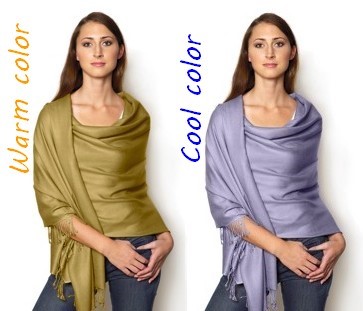
Take one silver-colored and one gold-colored piece of fabric or paper. Place one hand on the silver-colored piece and the other hand on the gold-colored piece. Also try the inner side of your wrists or another part of your body that gets rare sun exposure. You will notice that with the right color your skin color will blend in well with the color of the paper or fabric, and your skin will look even. With the wrong color your skin will look uneven and speckled.
Silver equals COOL, and gold means WARM. Once again, pretty easy.
There are a couple of things you can do to make the test more accurate. Make sure that you’re in a room with natural light, artificial light can ruin the test. And you will need pieces of paper or fabric that are large enough to cover a good amount of skin. If you use drapes, make sure they cover the shoulders. If you use paper, make sure it’s large enough for both hands to fit on the paper.
-
Vein Test
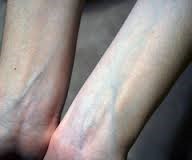
This one is pretty straightforward. Simply look at the veins on your inner wrist and determine whether they look more blue(ish) or green(ish). Once again, make sure you conduct the test in natural light. And don’t use this test right after tanning or if you have a deep tan as it makes it more difficult to determine the color.
Green veins mean WARM, blue mean COOL.
Whether you use just one test or try them all, you’re now only one step away from knowing your season. At this point:
- Cool undertone means that you are a SUMMER or a WINTER type.
- Warm undertone means SPRING or AUTUMN type.
2. Determine whether you are a LIGHT or DARK type
Define the brightness (light or dark) of your eyes and your natural hair color.
COOL undertone
Eyes and hair = DARK –> Winter
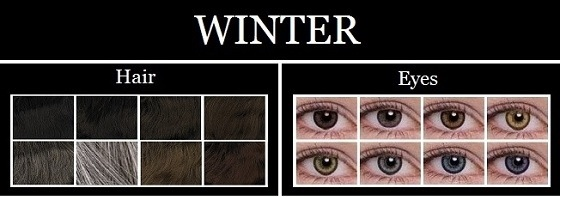
Eyes and hair = LIGHT –> Summer
WARM undertone
Eyes and hair = DARK –> Autumn
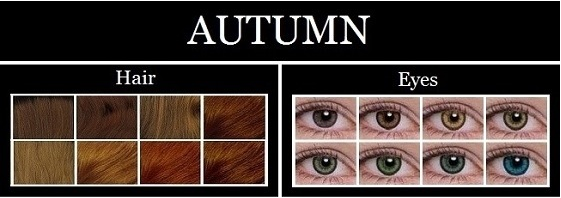
Eyes and hair = LIGHT –> Spring
Finding Your Season Is That Easy !
The best part of the 4 season color analysis is discovering your personal matching color palette!
Click on your season below and find out which garment colors should be in your closet from now on. Once you know your color palette, shopping for apparel, accessories and make-up will be a breeze !
In case of doubt, consider my Personal Color Advice (PCA)
• Get your natural coloring explained
• Recognize your personal colors with ease
• Be able to adjust your daily wardrobe to your color palette
• Find the best color contrasts for you
• Get tips on how to optimize your look with accessories
• Find your most flattering make-up and hair colors
Personal Color Advice for only $39
Tips for ALL Types
- Black makes you look slimmer but is only recommended for winter types, all the other types, choose other dark colors.
- To convey authority and power, wear your dark colors: black, dark grey and navy blue. (Why do you think the police and other authorities are wearing navy blue or black uniforms?)
- Clear colors can be used to make your breasts look bigger.
- If you are a sales woman: do not use contrast, like black/white or blue/white, use harmonizing colors. The contrasts look too aggressive.
Experiment with these new findings. After you found your personal palette, try to analyze your friends and/or family and check if they are wearing their matching colors. If they are not, tell them about your new gained wisdom about color analysis, they will appreciate your advice !
Don’t forget to color your day !
Subscribe To My Blog

